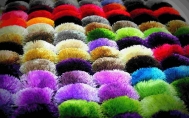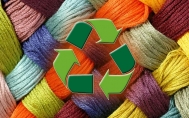THE STABILIZATION OF NANO SILVER ON POLYESTER FILAMENT FOR A MACHINE-MADE CARPET
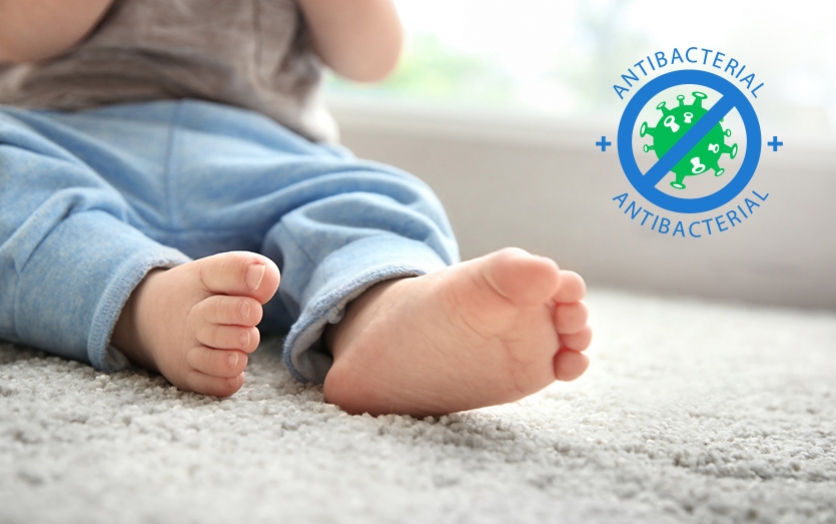
Nowadays, polyester filament yarns with permanent anti-bacterial characteristics are known as an innovative yarn in the textile industry for machine-made carpets and garments. Different methods, such as chemical modification, entrapment and encapsulation, have been applied to stabilize the silver nanoparticles on polyester filament yarn for use in machine-made carpets. In this article we modified the nano-silver particles by a chemical reaction in order to produce a polyester filament yarn with permanent anti-bacterial characteristics using a spraying method. The anti-bacterial tests were carried out on the nano-silver-coated machine-made carpet according to ATCC 27853, 25923 and 25922 some 72 h before and after the washing process.
The results
showed that the nano-silver-coated polyester machine-made carpet has a permanent anti-bacterial characteristic.
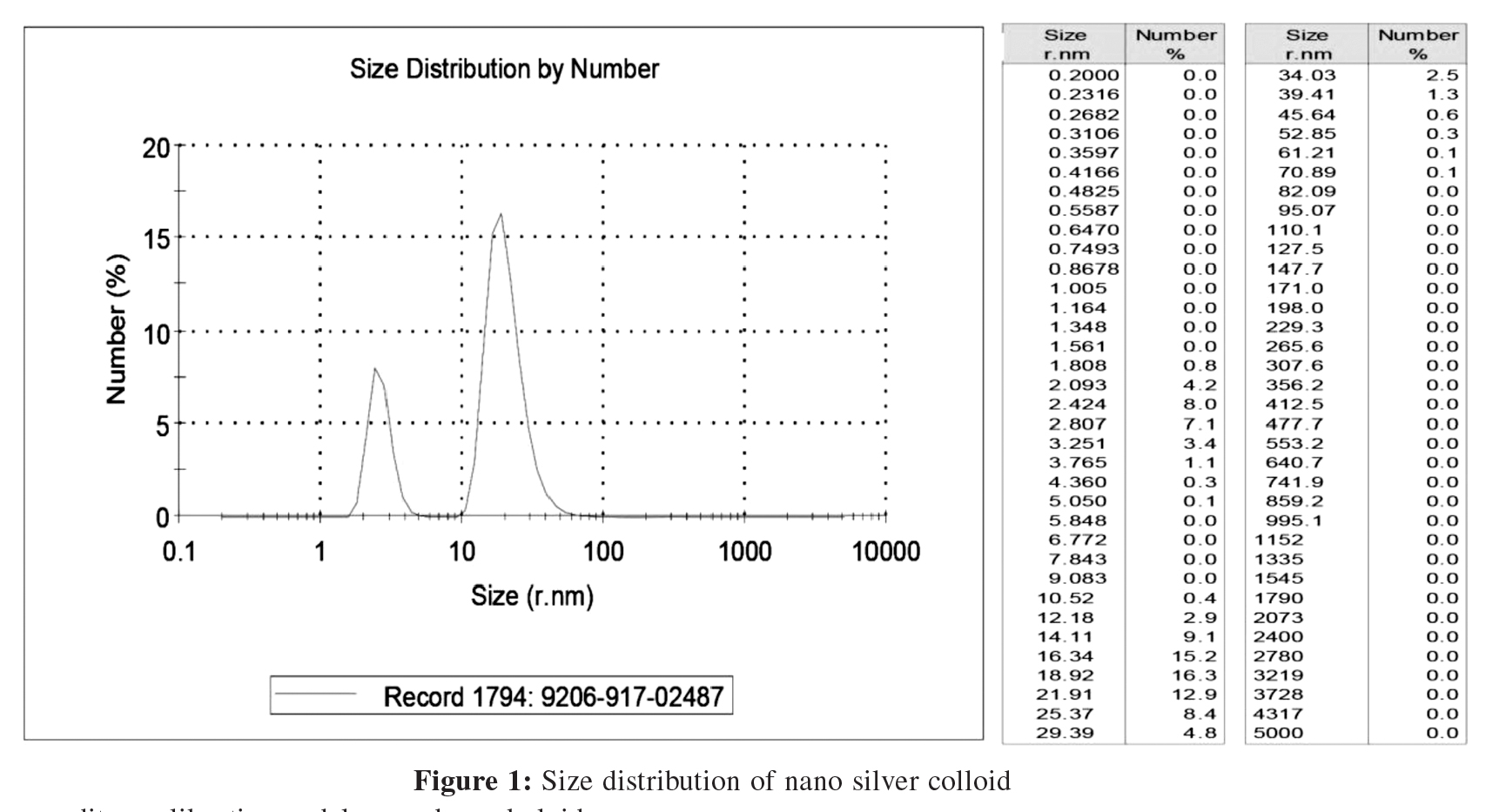
1 INTRODUCTION
Microbial organisms, bacteria and micro-organisms are the main reasons for sickness, infections and bad odours, etc. In fact, increasing death rates in many underdeveloped countries, such as many African countries, led to the legislation of global and social policies in order to overcome this challenge. Such problems and
needs have led to a resurgence in the use of silver- and copper-based antiseptics that may be linked to broadspectrum activity and a far lower propensity to induce microbial resistance than antibiotics1.
The anti-bacterial characteristics of silver and silver salts have been observed since antiquity2. Silver is currently used to control bacterial growth in a variety of applications, including dental work, catheters and burn wounds3,4.
In fact, it is well known that Ag ions, Ag-based compounds, copper and brass compounds have a strong biotical effect on many bacteria species, such as E. coli, P. aeruginosa and S. aureus5.
A lot of information is available about the practical use of nanoparticles for food safety and hygiene, the disinfection of water in swimming pools and hospitals, wound healing, air disinfection and surface sanitation6–8. It is believed that the germicidal property of metals, especially heavy metals, is due to oligodynamic effect in
which the metal and metal compounds, when introduced into the interior of bacterial cells, have the ability to change and then kill them in a specific way. Copper and
silver are the most studied metals for oligodynamic action9. The data from silver suggest that its ions denature the proteins in the bacterial cells by binding to the reactive groups, resulting in their inactivation10.
Different factors influence the efficiency of silverand copper-based compounds, such as the particle size and particle size distribution. In these cases, a reduction of the particle size of silver and copper nanoparticles is a reliable solution to improve their efficiency and biocompatibility.
In this field, nanotechnology has a direct effect on the elimination of particle size limitations and changing the world outlook regarding science10,11. In this study we investigated the stabilization of nano silver on polyester filament yarn in order to produce a machine-made carpet with permanent antibacterial characteristics.
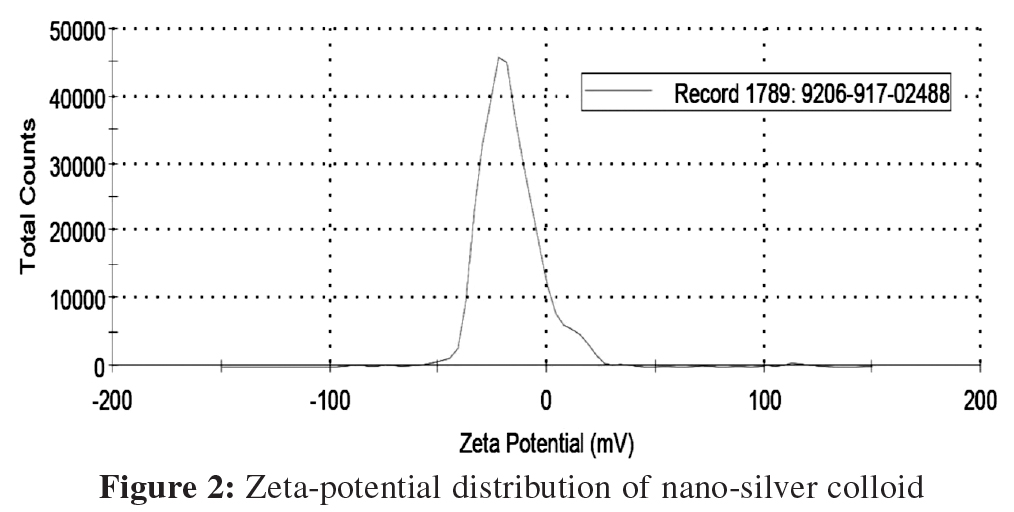
2 MATERIALS
A nano-silver colloid was obtained from US Research Nano Material Company. The polyester filament yarns as a pile, warp and weft in a machine-made carpet were provided by the Farrokh Sepehr Kashan Textie Company. Gluteraldehyde (cross linking agent) and -amino propyl tri-etoxy silane were provided by the Sigma-Aldrich Company on a laboratory scale. An amphoteric surfactant based on amino betaine was provided by the Carp Company.

3 METHODS
Nano-silver colloids, including a cross-linking agent and amphoteric surfactant in different concentrations, were applied to the polyester filament yarn and the back of a machine-made carpet using a spraying method. The nano-silver-coated polyester filament yarn and polyester machine-made carpet were dried and cured in the stenter at 130 °C for 6 min.

4 ANALYSIS
To predict the stability of the anti-bacterial characteristics, the nano-silver back-coated polyester machinemade carpets were analysed according to ATCC 27853, 25923 and 25922 some 72 h before and after a washing process in the Pasteur Institute of Iran.
The anti-bacterial characteristic of the nano-silvercoated machine-made carpet were measured based on the growth of different bacteria, such as E. coli, P. aeruginosa and S. aureus with respect to the reference sample.
The stability of the nano-silver colloids and their particle size distribution were analysed using the DLS (dynamic light scattering) method at 25 °C (Malvern seri nano (zeta sizer) model DLS).
The FTIR analysis of the obtained solution from washing the nano-silver-coated polyester filament was carried out using Fourier-transform spectroscopy in the range 300 cm–1 to 4000 cm–1. The distribution of nano-silver on the back of the polyester filament machine-made carpet was analysed using the FESEM method in 1.89 KX (Philips model
FESEM).
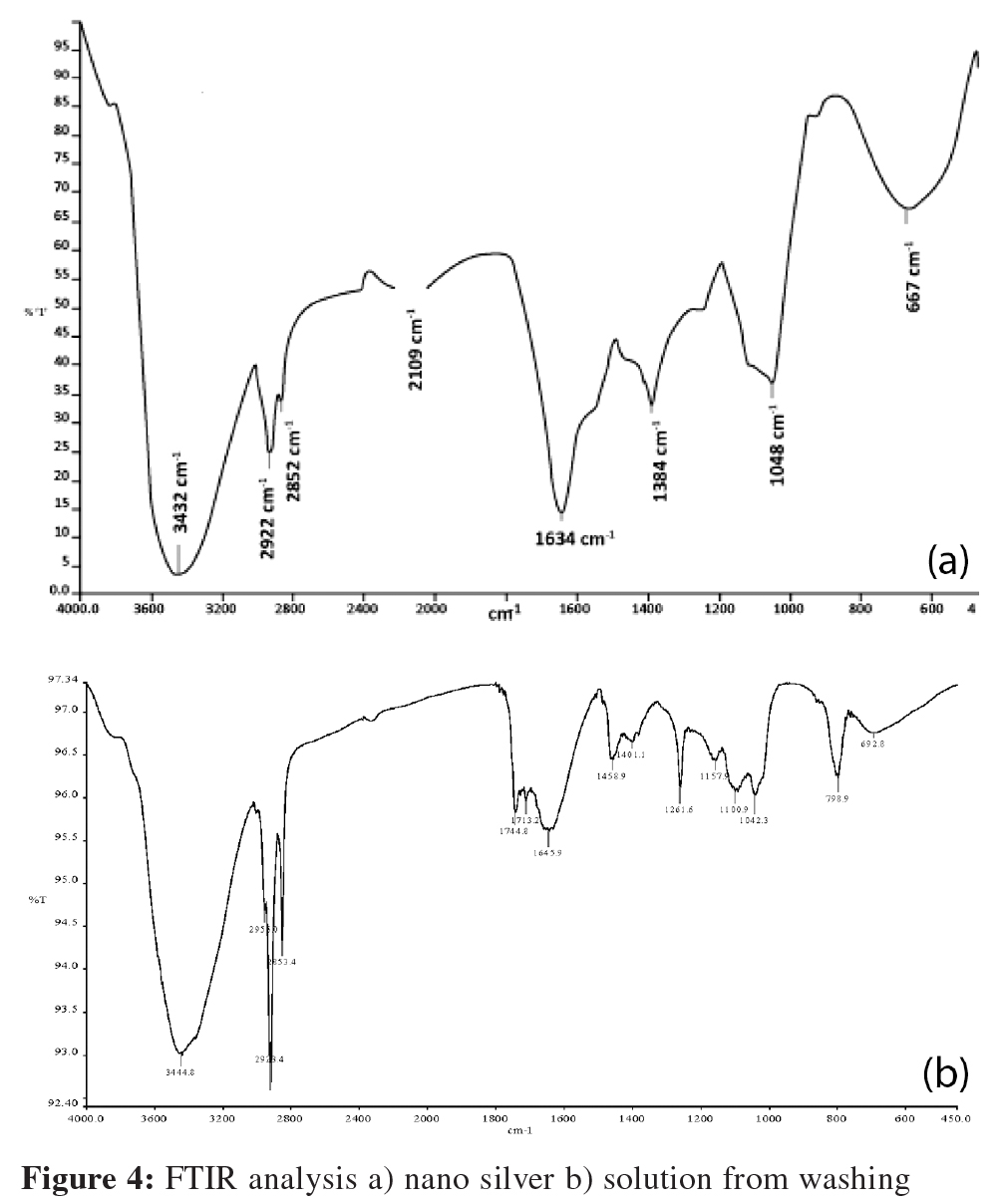
5 PREPARATION METHOD
The Mac Farlan solutions of different bacteria such as P. aeruginosa (ATCC 27853), S. aureus (ATCC 25923) and E. coli (ATCC 25922) at a concentration of 1.5 × 108 CFU/mL were prepared in the first stage. During the next stage, the nano-silver-coated machine-made carpet and the reference machine-made carpet were put in contact with the Mac Farlen solution of different bacteria for 24 h. After the cultivation and incubation process for 72 h at 37 °C, the growth of the bacteria were analysed.
6 RESULTS AND DISCUSSION
6.1 Particle size distribution of nano-silver colloid The particle size distribution of the nano-silver colloid was measured using the DLS method. The results showed that the average size of the nano-silver colloid and the Pdi constant were about 49.08 nm and 0.408 nm, respectively. Figure 1 shows the size distribution of the nano-silver.
6.2 Stability of the nano-silver colloid The stability of the nano-silver colloid was measured using the DLS method according to the zeta-potential value. The results showed that the nano-silver colloid has a suitable stability under normal conditions. In Figure 2, the zeta-potential distribution of the nano-silver is shown. According to Figure 2, the zeta-potential for a nano-silver colloid is about –17.2 MV. In addition, the nano-silver particle colloid has a suitable stability against sedimentation.
6.3 Distribution of nano-silver on the back of polyester machine-made carpet The distribution of the nano silver on the back of the machine-made carpet is shown in a FESEM micrograph in 1.89 KX. According to Figure 3, it can be concluded that the anti-bacterial characteristics of the polyester-filament machine-made carpet is due to the nano-silver material that was applied on the polyester filament yarn and the back of the machine-made carpet.
6.4 Anti-bacterial test The nano-silver back-coated machine-made carpets before and after washing were tested according to ATCC 27853, 25923 and 25922 in 72 h. In Tables 1 and 2, the concentration of bacteria before and after the washing processes are presented. The results showed that the nano-silver-coated polyester- filament machine-made carpet before and after washing has suitable anti-bacterial characteristics against E. coli, P. aeruginosa and S. aureus (99.9 % anti-bacterial
characteristic).
6.5 FTIR analysis of nano-silver-coated polyester-filament machine-made carpet In order to demonstrate the permanence of the anti-bacterial characteristic in a polyester-filament machine- made carpet, FTIR analyses carried out on a nano-silver colloid and the obtained solution from washing the nano-silver-coated polyester-filament machinemade carpet. Figure 3 shows the FTIR analysis of the nano-silver colloid and the obtained solution from washing the nano-silver-coated polyester-filament machinemade carpet (Figure 4).
According to Figure 4a, the sharp peaks at 1634 cm–1 and 1384 cm–1 indicate the formation of asymmetric and symmetric stretching modes of metal carbonyl groups. This is due to the stabilization of the silver nano particles by the –COO- group of amino betaine (as an amphoteric surfactant). The peaks at 3432 cm–1 and 2922 cm–1 are related to the C-H stretching bond of the propyl and the amine groups of the _-amino propyl tri-etoxy silane12.
According to Figure 4b, the sharp peaks at 3444 cm–1 and 2934 cm–1 are related to the O-H and C-H groups of the soap solution, which are used for washing the nano-silver-coated polyester-filament machine-made carpet.
Moreover, the lack of any peak at 1634 cm–1 and 1384 cm–1 indicates that the washing process had no effect on removing the silver nanoparticles from the anti-bacterial polyester-filament machine-made carpet.
7 CONCLUSION
The results showed that the nano-silver-coated polyester- filament machine-made carpet has a permanent anti-bacterial characteristic. This is due to the modification process carried out on the nano-silver before applying it to polyester-filament yarn and the back of the machine-made carpet. Having permanent anti-bacterial characteristics in the machine-made carpet make it more suitable for use in crowded places by removing the bad smells in a machine-made carpet due to the direct contact of people with machine-made carpet’s surface.
8 REFERENCES
1 S. A. Jones, P. G. Bowler, M. Walker, D. Parsons, Wound Repair and Regeneration, 12 (2004) 3, 288–294, doi:10.1111/j.1067-1927. 2004.012304.x
2 S. Silver, L. T. Phung, Annu. Rev. Microbiol., 50 (1996), 753–789, doi:10.1146/annurev.micro.50.1.753
3 M. Catauro, M. G. Raucci, F. De Gaetano, A. Marotta, J. Mater. Sci. Mater. Med., 15 (2004) 7, 831–837, doi:10.1023/B:JMSM. 0000032825.51052.00
4 J. H. Crabtree, R. J. Burchette, R. A. Siddiqi, I. T. Huen, L. L. Hadnott, A. Fishman, Perit. Dial. Int., 23 (2003) 4, 368–374
5 G. Zhao, S. E. Stevens Jr., Biometals, 11 (1998) 1, 27–32, doi:10.1023/A:1009253223055
6 C. E. Santo, N. Taudte, D. H. Nies, G. Grass, Appl. Environ. Microbiol.,
74 (2008) 4, 977–986, doi:10.1128/AEM.01938-07
7 S. A. Wilks, H. Michels, C. W. Keevil, International Journal of Food Microbiology, 105 (2005) 3, 445–454, doi:10.1016/j.ijfoodmicro. 2005.04.021
8 D. S. Blanc, P. Carrara, G. Zanetti, P. Francioli, J. Hosp. Infect., 60 (2005) 1, 69–72, doi:10.1016/j.jhin.2004.10.016
9 A. J. Varkey, Scientific Research and Essays, 5 (2010) 24, 3834–3839
10 M. Yamanaka, K. Hara, J. Kudo, Appl. Environ. Microbiol., 71 (2005) 11, 7589–7593, doi:10.1128/AEM.71.11.7589-7593.2005
11 J. S. Kim, E. Kuk, K. N. Yu, J. H. Kim, S. J. Park, H. J. Lee, S. H. Kim, Y. K. Park, Y. H. Park, C. Y. Hwang, Y. K. Kim, Y. S. Lee, D. H. Jeong, M. H. Cho, Nanomedicine: Nanotechnology, Biology, and Medicine, 3 (2007) 1, 95–101, doi:10.1016/j.nano.2006.12.001
12 R. Augustine, K. Rajarathinam, Int. J. Nano Dim., 2 (2012) 3,
205–212



















